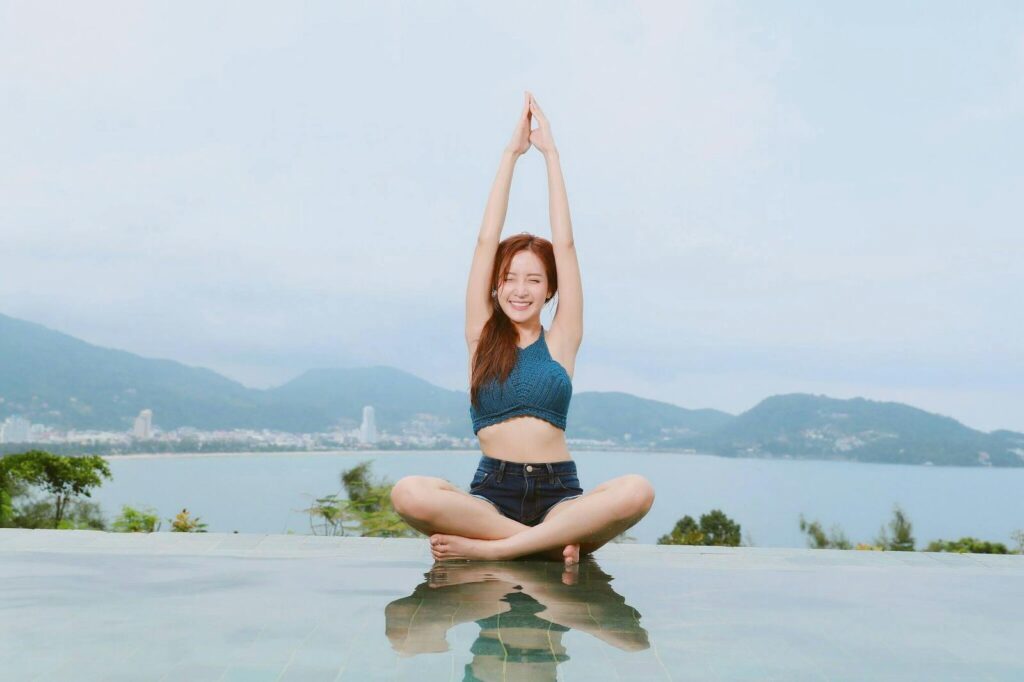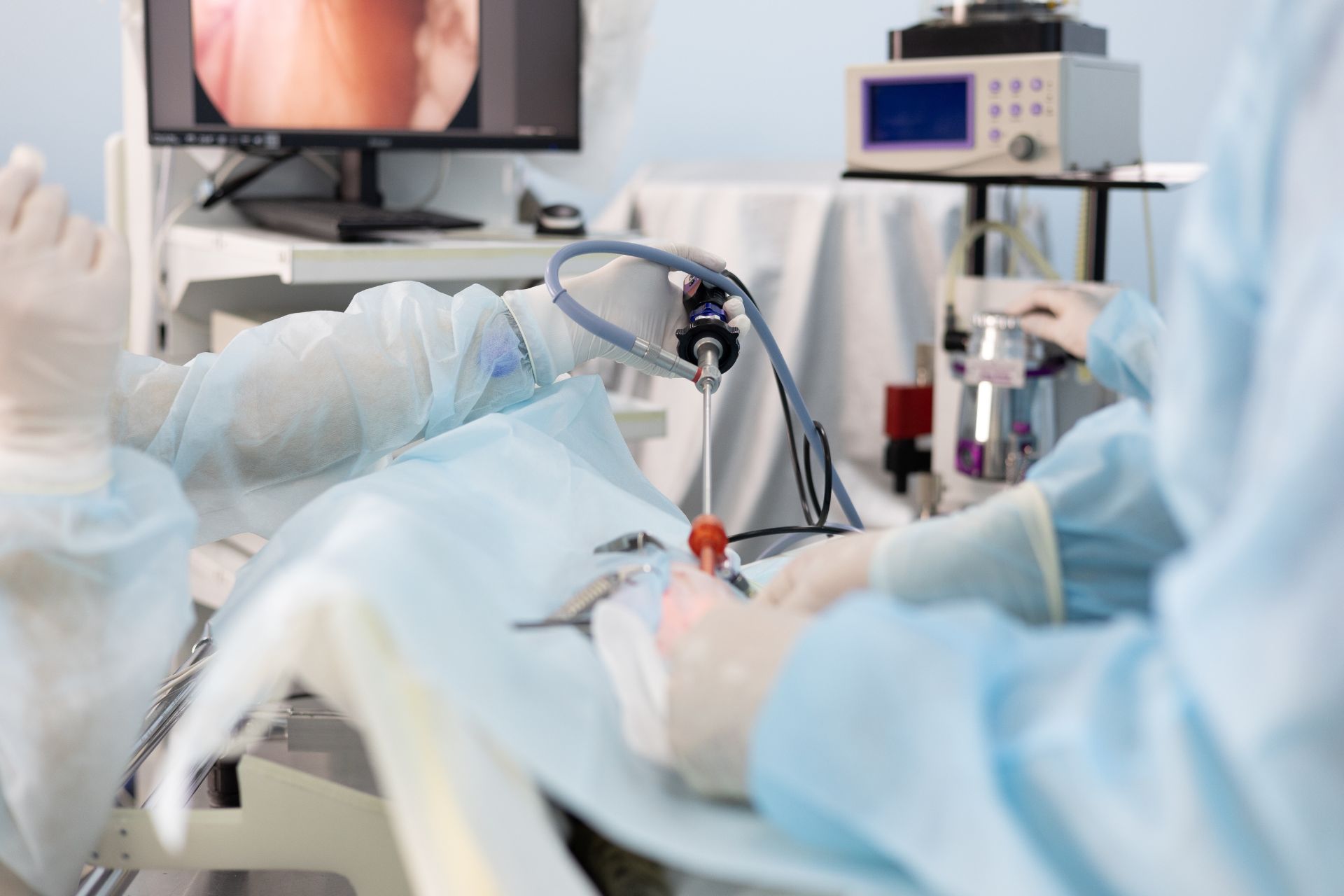Sitting at a desk for extended periods, a common reality for many in the modern workforce, undeniably impacts our physical well-being. The sedentary nature of office work can lead to a cascade of physical discomforts, ranging from nagging stiffness to chronic pain, particularly in the back, neck, and hips. Numerous studies have highlighted this critical issue; for instance, a 2017 analysis of nearly 8,000 American adults, published in the *Annals of Internal Medicine*, explicitly linked extended periods of sedentary behavior with higher mortality rates and an increased risk of chronic illnesses. This scientific evidence underscores the urgency of integrating movement into our daily routines, even amidst a workday structured around computer screens.
While health experts universally recommend incorporating as much movement as possible throughout the day to counteract the negative effects of prolonged sitting, the demands of our jobs often make this a challenge. It’s not always feasible to take extensive breaks or engage in vigorous physical activity. This is precisely where the power of desk yoga comes into play, offering a practical, accessible, and highly effective solution. These simple, chair-based stretches can be seamlessly woven into your workday, providing immediate relief and long-term benefits without requiring special equipment or a dedicated yoga studio.
This article rounds up some of the most effective desk yoga poses specifically designed to loosen up tight muscles and combat the stiffness that inevitably arises from sitting all day. We’ve organized these stretches into key areas of the body that commonly experience soreness for office workers: the shoulders and neck, the hips, and the legs and low back. Whether you’re grappling with persistent discomfort in a specific problem area or simply seeking a full-body stretch to refresh your mind and body, these desk yoga poses are an invaluable addition to your daily routine. Remember, these stretches are often best performed in an armless chair to allow for a full range of movement.
### Targeting the Upper Body and Hips: Essential Desk Stretches for Office Warriors
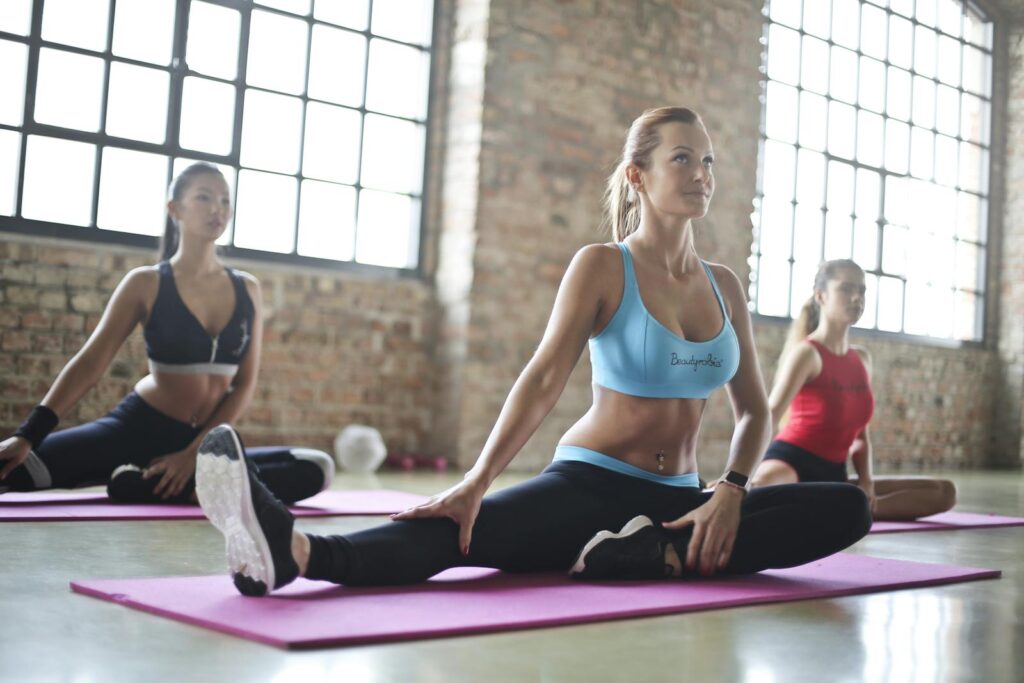
1. **Seated Cat/Cow Sequence: Spinal Mobility and Shoulder Relief**The Seated Cat/Cow sequence is an incredibly effective stretch for addressing the common hunched posture often adopted when focusing on screens, a phenomenon sometimes referred to as “tech neck.” This pose is a fantastic way to gently mobilize the spine, helping to alleviate the rounded upper back and prevent the formation of stubborn knots around the shoulder blades that can develop from prolonged static positions.
To begin this dynamic stretch, sit tall in your chair with your feet flat on the floor and your spine straight. Rest your hands comfortably on your knees. As you transition into the Seated Cat, exhale and round your upper back, tucking your chin deeply into your chest while straightening your arms. Visualize the space between your shoulder blades broadening significantly, and feel your tailbone tucking gently underneath you. This movement compresses the front of your body and directs your breath into the back, providing a deep stretch for the upper back.
Next, move into the Seated Cow by inhaling as you press your chest forward, actively squeezing your shoulder blades together behind your back, and lifting your face towards the ceiling. Your arms may naturally bend here. It should feel as though your tailbone is jutting slightly out behind you, creating a gentle arch in your lower back and a wonderful opening through the entire front of your abdomen, chest, and belly. Try connecting these two movements fluidly with your breath: exhaling into Cat and inhaling into Cow, repeating for several breaths to massage the spine and release accumulating tension.
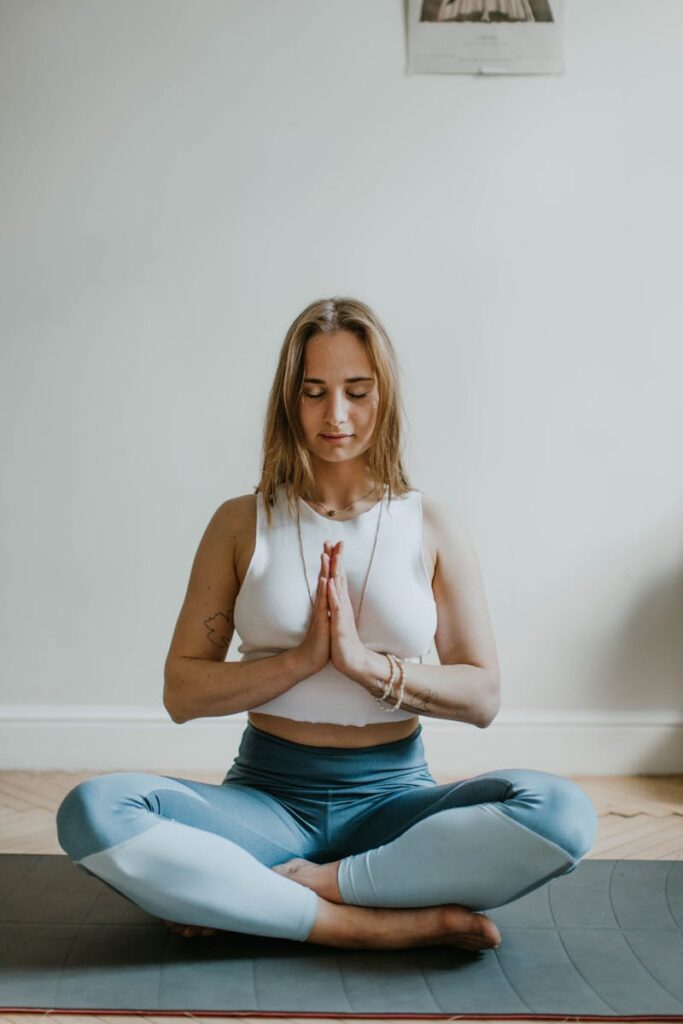
2. **Seated Spinal Twist (Comprehensive): Releasing Neck and Spinal Tension**This versatile desk stretch is perfect for counteracting the stiffness that can build up in your neck and spine, especially when you haven’t shifted your position for an extended period. It focuses on rotational movements of the spine, which are crucial for releasing tension in the spinal muscles and the surrounding abdominal muscles. Creating space throughout the front and back of the abdomen is key to softening and alleviating back pain often linked to sedentary habits.
For one variation, sit on the edge of your chair with your feet flat on the floor and maintain a tall, straight spine. Rest your hands on your knees. Gently rotate your torso to the left, placing your right hand on your left thigh. Your left hand can reach behind you to grasp the back of the chair for support, or you can simply tuck it behind your back. As you twist, look over your left shoulder and actively engage your core to keep your spine elongated. Hold for 10 to 30 seconds.
An alternative approach, also highly effective, begins by sitting tall and extending your arms straight out from your shoulders in a ‘T’ shape. Then, twist to your right, placing your left hand on your outer right knee or thigh. Your right arm can rest on the chair arm or the chair back, much like in a Half Lord of the Fishes pose. As you breathe in, press through your heels and lengthen your spine; as you breathe out, deepen the twist through your abdomen, chest, and finally, your head. For both variations, repeat the twist on the other side, holding each for 10 to 30 seconds and aiming to move a little deeper with each exhale as your muscles relax and soften. Aim to repeat each side at least twice, linking the movement to your breath.
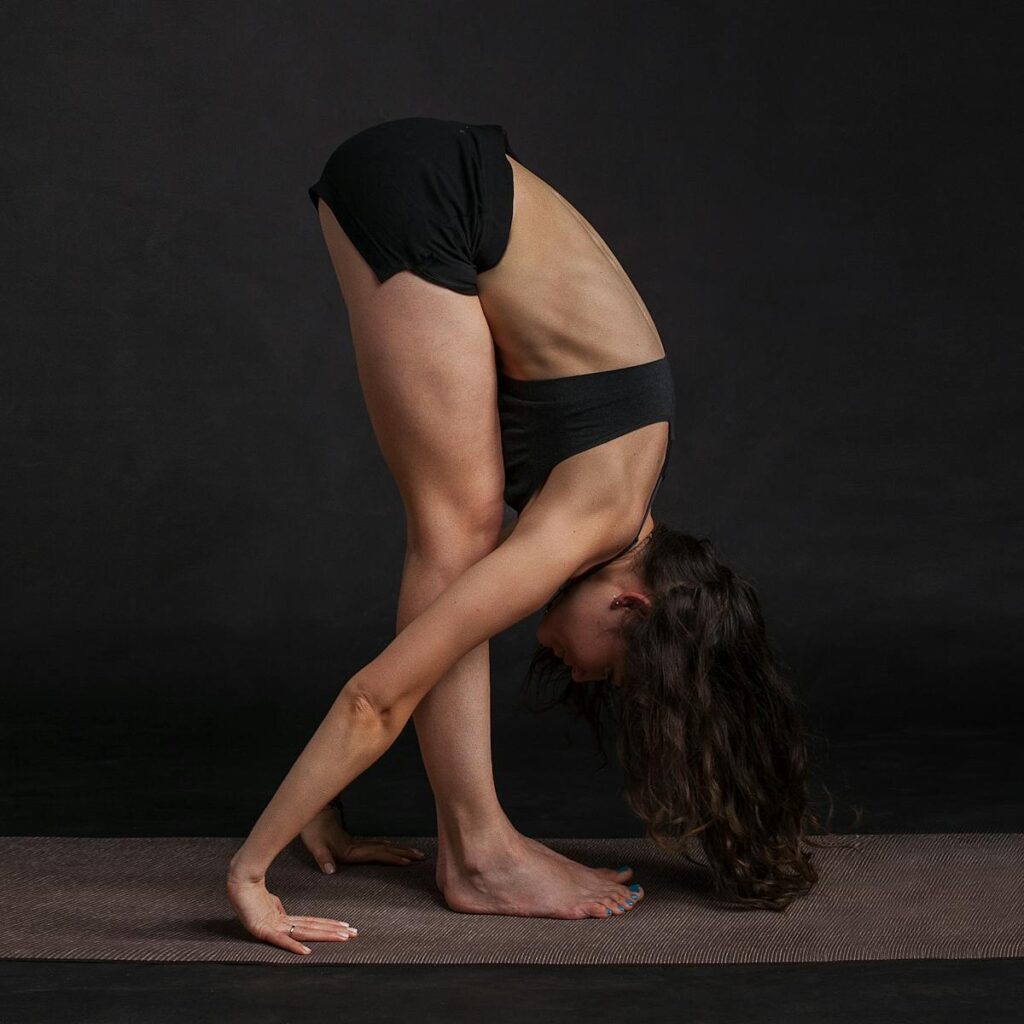
3. **Seated Chest Opener (Forward Slouch Counter): Reversing Computer Slouch**The Seated Chest Opener is an indispensable posture for individuals who habitually slouch forward, often leading to a rounding of the vertebrae in the upper back. This stretch is a powerful antidote to what is commonly referred to as “computer slouch,” actively working to reverse the negative postural effects of prolonged time spent typing or leaning over a desk. It helps to open the entire front of the chest, which can become tight and contracted from hours of internal rotation in the shoulders.
To perform this stretch, sit toward the edge of your chair with your feet firmly planted on the floor and your spine straight and tall. Interlace your fingers together behind your back, allowing your clasped hands to rest on the small of your back. From this position, press your chest forward, straighten your arms as much as possible, and gently lift your hands off your back by pressing them away from your body. Concurrently, tilt your face up towards the ceiling, feeling a profound opening across your collarbones and pectoral muscles. Notice if you can take big, full breaths as you hold this stretch for 10 to 30 seconds, allowing your diaphragm to expand freely.
Another effective way to achieve a deep chest opening involves sitting towards the back of your chair, allowing your shoulder blades to graze the chair back. Reach your right arm behind the chair back and grab hold of the arm or seat, whichever is accessible. Do the same with your left arm. Then, gently push down with your hands to leverage the stretch, lifting your chest up towards the ceiling while keeping your belly relaxed. This variation helps to further emphasize the upward and outward expansion of the chest, providing significant relief for compressed upper bodies.
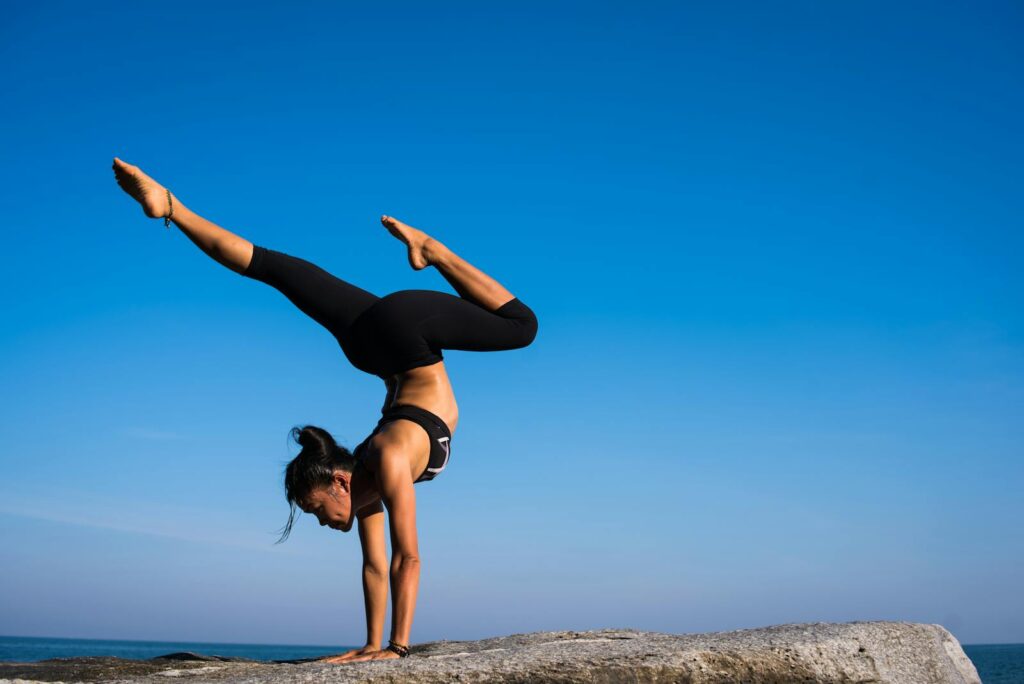
4. **Seated Eagle: Dynamic Upper Back, Neck, and Hip Release**The Seated Eagle pose offers a dynamic and comprehensive stretch, targeting multiple areas that commonly suffer from desk work. It’s particularly effective for opening the upper back and neck, while also providing a beneficial stretch for the outer hips, making it a multifaceted solution for desk-related stiffness. This pose integrates a unique arm and leg bind that creates complex leverage to unwind deep-seated tension.
Begin by placing your feet flat on the floor and sitting with a straight, tall spine. Cross your right leg over your left leg, ensuring your thighs are touching. For an intensified stretch or added stability, you can wrap the toes of your right foot around the back of your left calf, if comfortable. Next, extend both arms straight out in front of you. Cross your right arm underneath your left arm so that your elbows are stacked directly on top of each other. Bend at your elbows, directing your fingers upwards towards the ceiling.
From here, you can choose to stay in this position, or deepen the bind by wrapping your right palm around your left palm so that your hands touch. Once in the desired arm position, gently move your elbows away from your chest and up towards the ceiling. This action will intensify the stretch across the back of your shoulder blades and upper back. Throughout the pose, keep your core engaged to prevent your spine from rounding. Hold this side for 10 to 30 seconds, visualizing your breath expanding the space between your shoulder blades. Remember to repeat the entire sequence on the other side by crossing your left thigh over your right and your left arm underneath your right arm.
5. **Seated Figure-4 Fold (Hip & Glute Release): Unwinding Lower Back and Gluteal Tightness**Prolonged sitting in an upright position causes the hip flexors to shorten and stiffen, which can, in turn, pull other surrounding muscles out of alignment. If your pelvis and glutes often feel particularly sore at the end of the day, incorporating this versatile stretch can be a game-changer. The Seated Figure-4 Fold, also known as Chair Pigeon Pose or Ankle Over Knee, is specifically designed to target the glutes, hamstrings, and outer hips, offering profound relief after long hours spent at your desk. It’s an essential pose for easing hip and glute tightness, while also providing a gentle stretch for the lower back.
To perform this stretch, sit tall with your feet flat on the floor and your spine erect. Cross your right leg over your left, so that your right ankle rests on top of your left thigh, forming a figure-4 shape with your legs. It is crucial to keep the foot on your crossed leg actively flexed to protect your knee joint from strain. From this position, gently lean your right knee toward the floor to initiate the stretch in your outer hip.
You can deepen the pose by reaching down to grab the seat of your chair with both hands, then hinging slightly forward from your hips while diligently maintaining a flat back. Ensure your neck remains in line with your spine. Alternatively, to focus on the lower back and glutes, you can simply lift your chest and then lean your chest forward over your legs, allowing your neck to relax. For an even deeper sensation, as described in the Chair Pigeon Pose, gently lean forward while keeping your back straight. Hold each side for 30 to 60 seconds, feeling the stretch intensify with each breath. Repeat several times throughout your shift to leave work feeling more loose and relaxed, and always remember to switch sides to ensure balanced stretching.
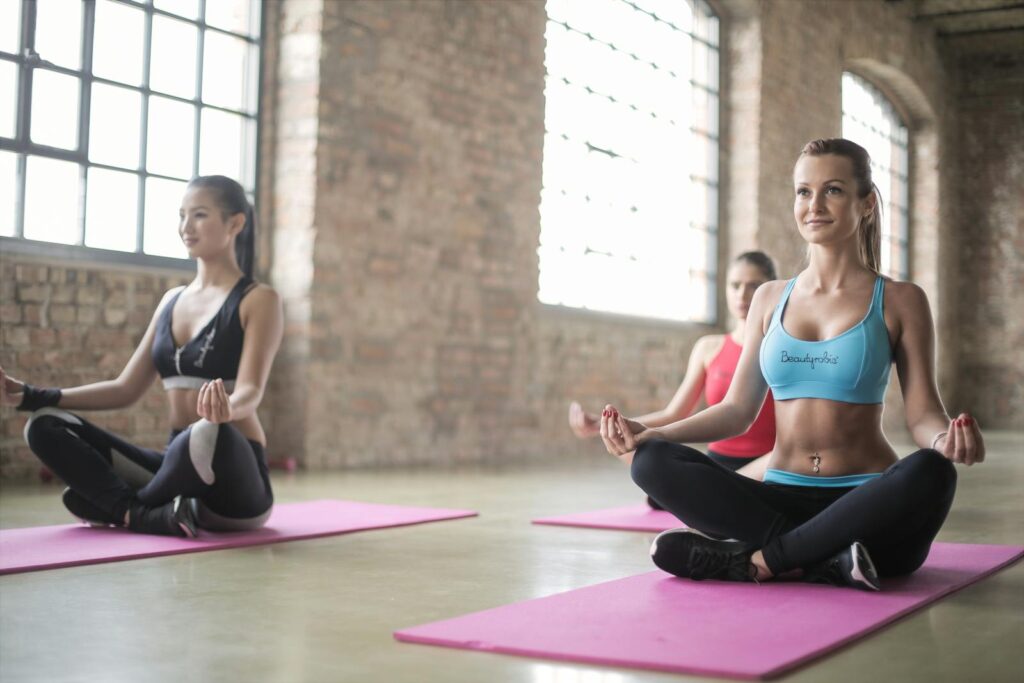
6. **Seated Side Angle (Side Body & Hip Stretch): Expanding the Ribcage and Hips**The Seated Side Angle is an excellent supported yoga pose that not only provides a deep stretch for your inner hips but also offers a wonderfully relaxing side bend. This brings much-needed movement into your ribcage, which can become compressed and rigid from hours of sitting, promoting fuller breathing and overall spinal mobility. This stretch effectively lengthens the side body from your hips all the way to your armpits, releasing tension that often accumulates in these areas.
To begin, sit comfortably in your chair and open your legs wide. Hook your left knee over the side of your chair, ensuring your left foot remains flat on the floor, with this leg bent at a 90-degree angle. Extend your right leg straight out to the side, keeping your right foot planted firmly on the floor. Maintain a long spine as you lean your torso towards your left leg. Bend your left arm, resting your elbow on your left thigh for support.
Now, extend your right arm overhead, reaching your fingers towards the left. As you hold this position, gently hug your shoulder blades together to help rotate your chest upwards toward the ceiling, deepening the side body stretch and opening the front of your torso. Hold this stretch for 10 to 30 seconds, breathing deeply into your right rib cage. To ensure a balanced practice, repeat the entire sequence on the other side by bending your right knee over the side of the chair and straightening your left leg, resting your right elbow on your thigh and reaching your left arm overhead. You can repeat this as many times as feels good throughout your workday.

7. **Seated Hip Flexor Stretch: Counteracting Sedentary Rigidity**The hip flexors, a crucial group of muscles connecting our core and pelvis to our thighs, are particularly susceptible to shortening and tightening due to prolonged sitting. This continuous contraction creates rigidity in the front line of the hips, which can contribute to lower back pain and restrict movement. The Seated Hip Flexor Stretch is specifically designed to open and lengthen these muscles, directly counteracting the stiffness and discomfort that accumulate from being sedentary all day.
To perform this targeted stretch, sit towards the front edge of your chair, placing both feet flat on the floor. Gently lean back, allowing your torso to recline slightly. Keep your right leg extended straight out in front of you. Now, hug your left leg into your chest by wrapping your hands around your knee or shin, pulling it as close as comfortable. Throughout this movement, strive to keep your back as straight as possible, avoiding any rounding of the spine. For an even deeper sensation across the front hip flexor of the extended leg, you can extend your right leg even longer or press your toes down into the ground.
Hold this position for 30 to 60 seconds, allowing the front of your hip to release. Remember to breathe deeply, directing your breath into any areas of tension. After completing the stretch on one side, repeat on the other side by extending your left leg and pulling your right knee into your chest. Incorporating this stretch several times a day can significantly alleviate tightness and improve mobility in your hips, contributing to a more comfortable and pain-free experience at your desk.
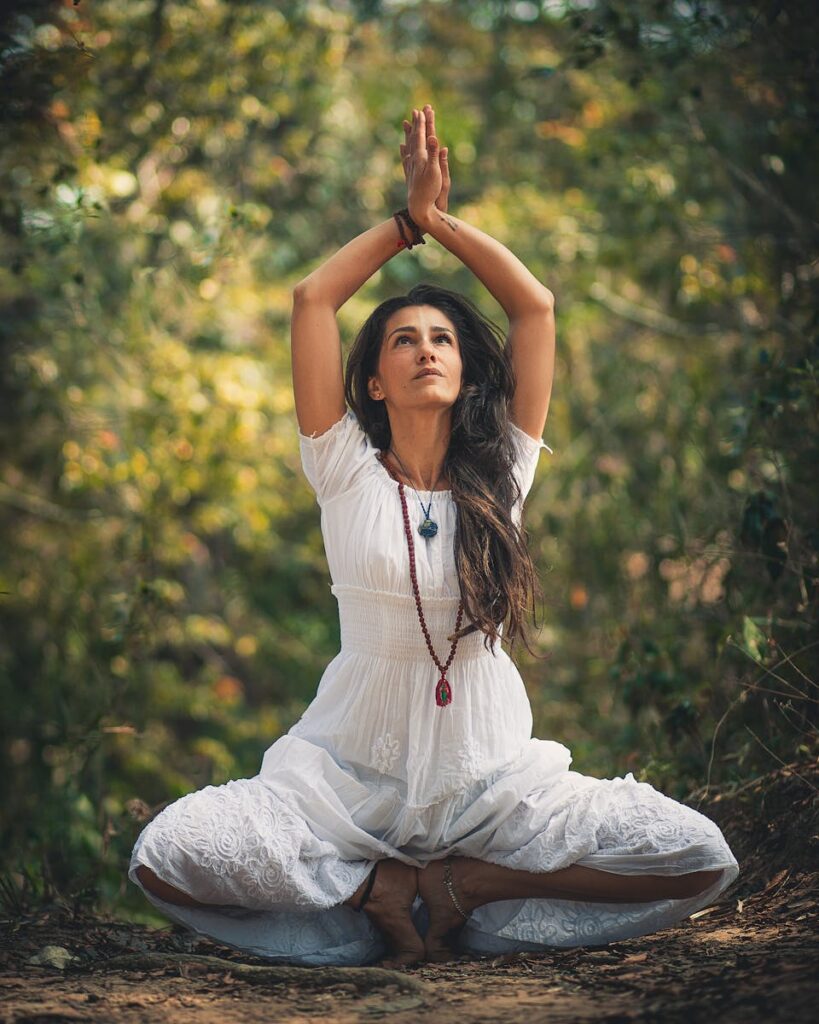
8. **Palms Interlaced Overhead (Shoulder & Chest Opener): Lengthening and Releasing Upper Body Tension**
This simple yet incredibly effective stretch is a powerful tool for instantly relieving tension in your chest and shoulders, which are often constricted from prolonged periods of typing and desk work. It helps to counteract the forward rounding of the shoulders and opens the front of the body, promoting better posture and a feeling of expansiveness. This pose is particularly beneficial for decompressing the upper body and increasing overall flexibility in the shoulders and neck, which can feel tight after hours of static computer work.
To begin, sit tall and comfortably in your desk chair, ensuring your feet are flat on the floor. Interlace your fingers in front of your chest, then press your palms away from your body, feeling a gentle stretch in your wrists and forearms. Keeping your fingers interlaced, slowly reach your arms overhead, extending them as high as comfortable. You might initially feel some resistance or tightness in your shoulders and neck; this is completely normal. To ease into the stretch, try bending your elbows slightly, moving your arms back a little more behind your head if possible, and then gently straightening your arms again.
Maintain a steady gaze straight ahead, or if comfortable, gently look towards the ceiling to enhance the stretch along the front of your neck and chest. Stay in this position for 5 to 10 deep breaths, focusing on lengthening your spine and opening your chest. After holding, release your arms back down, shake out your hands, and then switch the interlacing of your fingers (e.g., if your right thumb was on top, switch to your left thumb on top) and repeat the entire sequence. This ensures balanced stretching for both sides of your upper body and helps to distribute the release evenly across your shoulders and chest.
Having addressed the upper body and hips in our previous section, we now turn our focus to another area frequently afflicted by desk work: the legs and lower back. These regions bear the brunt of prolonged sitting, often leading to stiffness, soreness, and even chronic pain. Experts at Georgetown University, for instance, estimate that nearly 16 million Americans grapple with chronic back pain, making daily tasks incredibly difficult. The good news is that targeted desk yoga poses can provide significant relief, awakening dormant muscles and alleviating tightness. Even if you just experience mild stiffness at the end of a long day, incorporating these easy movements into your routine can make a world of difference. Here, we present seven essential stretches designed to release tension in your legs and lower back, enhancing your overall well-being and productivity.
### Releasing the Lower Body and Back: Essential Stretches for Pain Relief
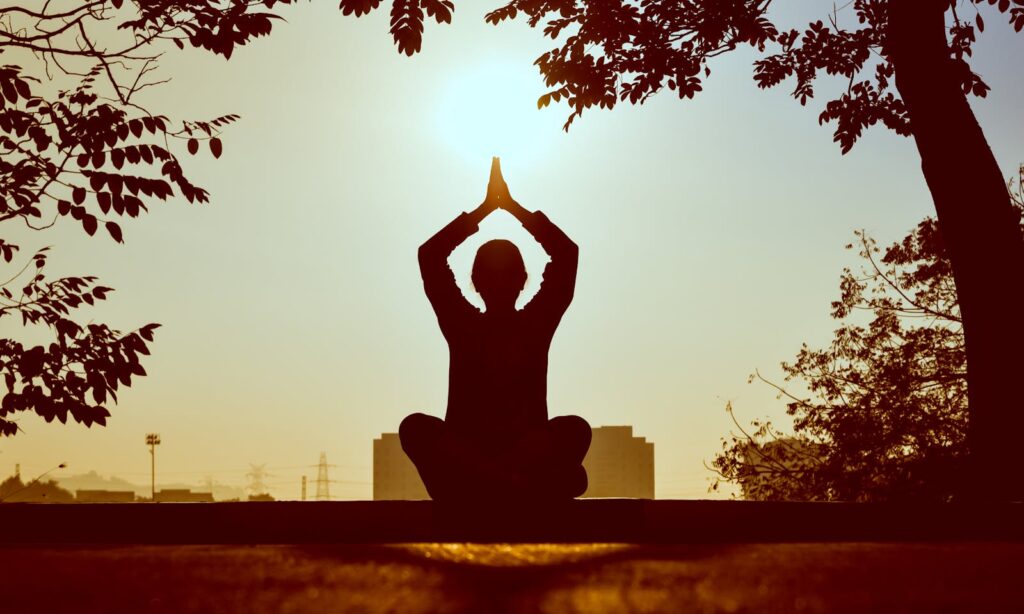
9. **Seated Side Stretch: Spinal Mobility and Low Back Opening**This simple yet powerful posture is an excellent way to improve the mobility of your spine and specifically open up the low back, which often becomes compressed from prolonged sitting. It also provides a wonderful stretch for the side body, extending relief from your hips to your armpits and encouraging a sense of openness. Regularly performing this stretch can help counteract the stiffness that accumulates during a busy workday.
To begin, sit tall in your chair with your feet flat on the floor and your spine straight. Reach down with your left hand to firmly grasp the seat of your chair for stability. As you sweep your right hand overhead, begin to lean your torso gently to the left, feeling the stretch deepen along your right side.
While leaning, consciously breathe into your right rib cage, allowing it to expand with each inhale. Gently press your chest toward the ceiling to ensure your upper body doesn’t collapse forward, maintaining an open posture. Hold this side for 10 to 30 seconds, focusing on the elongation.
After completing the stretch on one side, reverse the movement. Grab the chair with your right hand and sweep your left arm overhead, leaning to the right. Try a few rounds of flowing fluidly from side-to-side, synchronizing the movement with the pace of your inhales and exhales. This dynamic approach can further enhance spinal flexibility and provide comprehensive relief.

10. **Seated Toe Touch: Unwinding Hamstring, Glute, and Low Back Kinks**This desk stretch is a superb way to address any stiffness or “kinks” that develop in your spine, while simultaneously providing a deep and beneficial stretch for your hamstrings, glutes, and lower back. It’s an effective way to release the entire back side of the body, which can feel tight and compressed after hours of sitting. This pose is particularly effective for releasing stored tension and improving flexibility.
Sit towards the front of your chair, allowing ample space to hinge forward. Extend both legs straight out in front of you, actively flexing your toes back towards your face. This dorsiflexion helps to protect your knee joints and deepen the hamstring stretch. If extending your legs fully feels uncomfortable or causes strain, you can keep your knees slightly bent with your feet flat on the floor, modifying the stretch to suit your body.
From this position, hinge forward primarily from your hips, aiming to keep your back as flat as possible in the initial phase of the fold. Allow your torso to fold gently over your legs as you reach your hands towards your feet. Don’t worry if you can’t touch your toes; simply reach as far as comfortably possible, letting your hands rest on your legs, shins, ankles, or even the floor.
Once in the fold, allow your neck to release completely, letting your head round forward towards your knees. This gentle release helps to decompress the cervical spine. Hold this stretch for 30 to 60 seconds, breathing deeply and allowing gravity to assist in releasing tension. Repeat this pose whenever your lower back or hamstrings feel particularly tight.
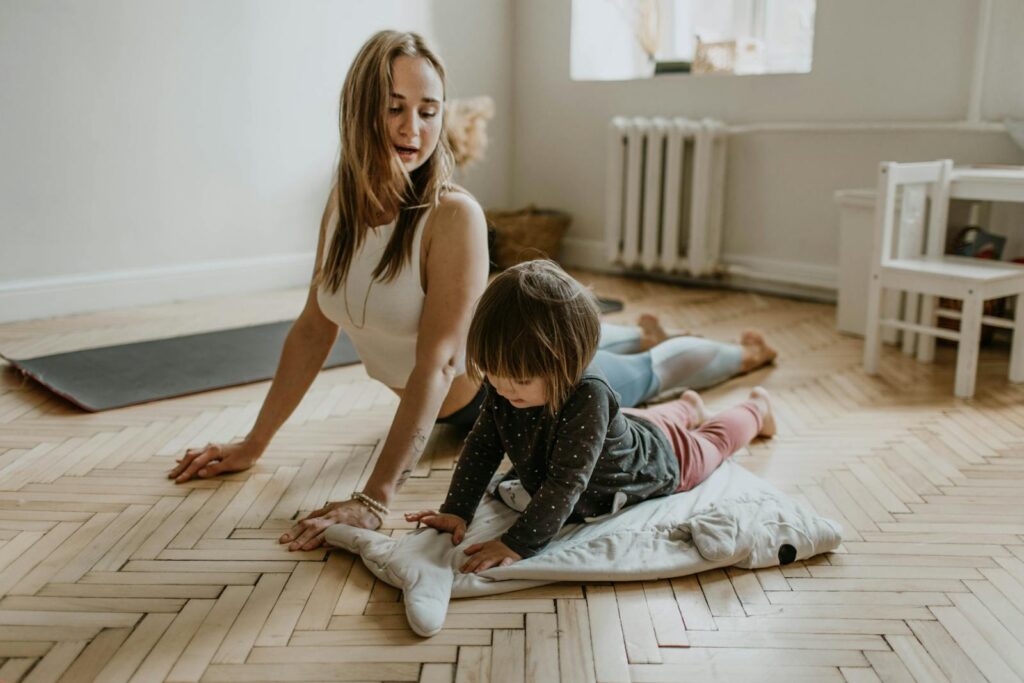
11. **Standing Quad Stretch: Alleviating Front-of-Leg Tension**Prolonged periods of sitting cause the quad muscles, located at the front of your thighs, to contract and shorten, leading to tightness and potential discomfort. This standing desk stretch is specifically designed to counteract this contraction, helping to alleviate the tension that builds up in the front of your legs and contributes to overall lower body stiffness. It also helps improve hip extension, which can be limited by sedentary habits.
Begin by standing behind your sturdy office chair, positioning your feet hip-distance apart. Place both hands firmly on the top of the chair’s backrest for support and balance. This stable base is crucial for maintaining proper form throughout the stretch.
Carefully bend your left knee, drawing your heel up towards your glute. While doing so, reach down with your left hand to gently grasp hold of your left foot or ankle. Keep your right hand pressed into the chair back for continued stability, ensuring you feel secure throughout the movement.
As you hold the stretch, continue to stand tall, actively engaging your core muscles to prevent your torso from rounding forward. Focus on drawing your left heel closer to your glute while simultaneously pressing your hips gently forward, feeling a deep stretch along the front of your left thigh. Hold this position for 15 to 30 seconds. Repeat the entire sequence on the other side by bending your right knee back and reaching down to hold your right foot with your right hand. This ensures a balanced stretch for both legs.
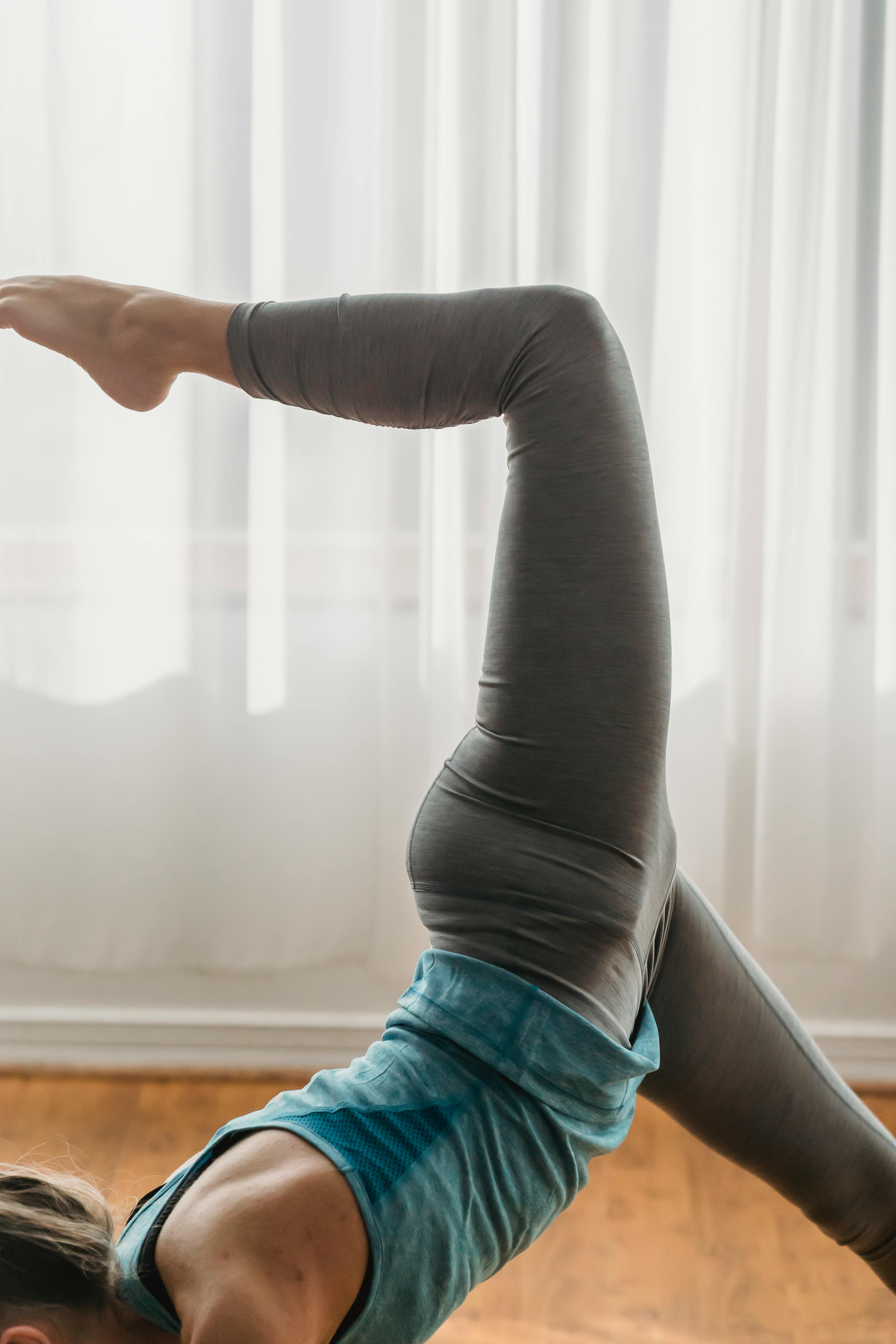
12. **Supported Downward Dog: Elongating Spine and Energizing Legs**This chair-supported variation of Downward-Facing Dog is an exceptional desk yoga pose that offers numerous benefits, including elongating the entire spine, opening up the low back, and bringing increased blood flow into the back of the legs. It helps to decompress the spinal discs and provides a refreshing full-body stretch that can significantly reduce stiffness and fatigue. This pose is especially beneficial for counteracting the effects of gravity on the spine from sitting.
Stand behind your desk chair, placing your hands on the top of the backrest. For enhanced stability, or if the backrest feels too high or unstable, you can stand at the front of your chair and grip the sides of the seat with both hands. This provides a secure anchor for the pose.
Begin to take small steps backward, allowing your torso to drop down and lengthen between the chair and your legs. Continue walking backward until you feel a comfortable and effective stretch. Your torso may be parallel to the floor, or it might be sloping down at a diagonal, depending on your flexibility and comfort level. The key is to find a position where you can maintain a long, straight spine.
Actively press down through your hands and feet, feeling the stretch intensify along your hamstrings and calves. Allow your head and neck to release freely between your arms, avoiding any tension in the neck. Hold this therapeutic stretch for 15 to 45 seconds, breathing deeply into your back and the back of your legs. Repeat this pose a few times throughout your workday, especially when your back feels particularly tight or your legs feel heavy.
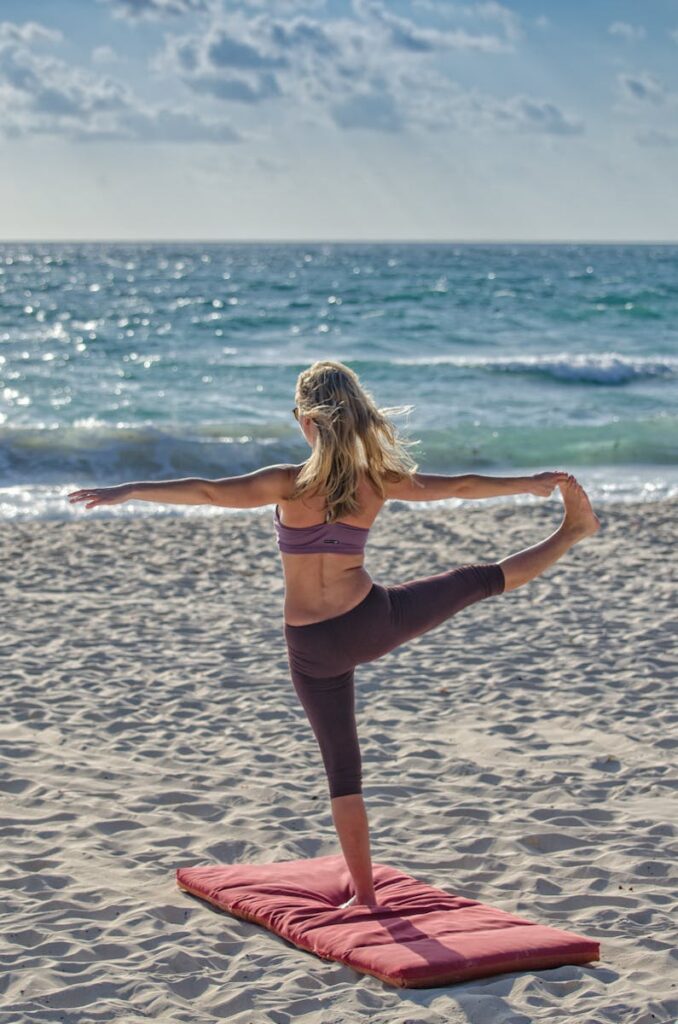
13. **Standing Calf Raise: Activating Dormant Lower Leg Muscles**After prolonged periods of inactivity at your desk, the muscles in your calves, hamstrings, and ankles can become dormant and stiff. The Standing Calf Raise is a simple yet effective exercise designed to re-engage and strengthen these lower leg muscles, improving circulation and reducing the feeling of sluggishness. Incorporating this movement throughout the day can prevent lower leg fatigue and enhance overall mobility.
Position yourself behind your desk chair, standing with your feet hip-distance apart. Place both hands gently on the top of the backrest for balance and support as you perform the movement. This provides a stable point of contact, allowing you to focus on the activation of your calf muscles.
From this stable stance, rise up onto the balls of your feet, lifting your heels completely off the floor as high as you comfortably can. Feel the engagement in your calf muscles. Hold briefly at the top of the movement, then slowly lower your heels back down to the floor in a controlled manner, ensuring a full range of motion.
Aim to perform 10 to 30 repetitions of this exercise in a single set. To truly awaken your lower body and counteract the effects of prolonged sitting, repeat this sequence three or four times throughout your day. This consistent engagement helps to keep your blood flowing and your muscles active, contributing to better energy levels and preventing stiffness in your legs and ankles.

14. **Standing Kick Back: Engaging Glutes and Strengthening Low Back**The Standing Kick Back is a fantastic desk exercise that actively engages your glutes and hamstrings, which often become inactive from extended sitting. Simultaneously, it gently releases tightness in the hip flexors and contributes to strengthening the muscles of the low back, promoting better postural support. This dynamic movement can help you feel more energized and alleviate the common aches associated with a sedentary workday.
Stand behind your desk chair with your feet placed hip-distance apart. You can either place your hands on the top of the backrest for support or clasp them around the sides of the chair, whichever feels more stable and comfortable for you. This foundational stability is key for performing the exercise effectively.
Shift your weight onto your left leg, ensuring it is grounded and stable. Keeping your foot actively flexed, gently kick your right leg straight behind you. As you move your leg back, allow your torso to lean slightly forward, creating a gentle hinge from the hips. The movement should be controlled and mindful, focusing on the contraction of your glutes.
After extending your leg, slowly bring it back down to the ground, placing your foot underneath your hips as you straighten back up to a standing position. Repeat this entire movement on the other side, shifting your weight onto your right leg and kicking your left leg behind you. Aim for 10 kick-backs on each leg and incorporate this exercise two or three times a day to keep your glutes, hamstrings, and lower back supported and active.
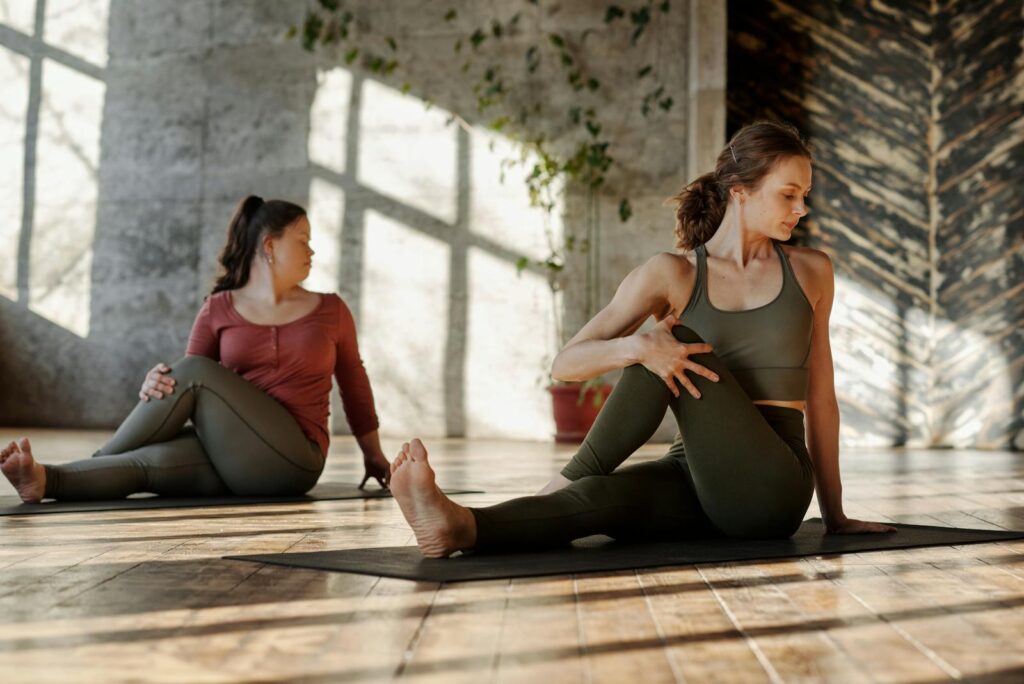
15. **Supported Standing Forward Fold: Releasing the Entire Back Line**This modified standing forward fold, utilizing your office chair, is an incredibly beneficial pose for releasing almost the entire backside of the body. It’s particularly helpful for those experiencing back stiffness, especially if you’re working in office attire, as it provides a gentle yet profound stretch for the back, hips, and legs. This pose helps decompress the spine and lengthen tight hamstrings.
To begin, stand in front of your chair, with the back of the chair facing you, and your feet positioned hip-width apart. Lean forward and place your palms, shoulder-width apart, on the top edge of the chair back. This provides a stable and supportive surface for your upper body as you fold.
From this position, begin to walk your feet backward, allowing your arms to fully straighten. Continue walking backward until you feel a gentle yet effective stretch along your back, hips, or the backs of your legs. Actively push down through your hands and feet, creating length through your spine and releasing your head towards the ground between your arms.
The extent to which you walk away from the chair will depend on your individual flexibility; your back might be almost straight, or it might be parallel to the ground. The key is to find a position where you can breathe deeply and feel a release without strain. Hold this supportive stretch for 30 to 60 seconds, allowing gravity and your breath to unwind deep-seated tension throughout your body.
Embracing these desk yoga stretches for your legs and lower back can transform your workday from a source of discomfort into an opportunity for rejuvenation. By weaving these simple, yet profoundly effective, movements into your daily routine, you’re not just fighting off pain; you’re actively cultivating greater bodily awareness, fostering a calmer mind, and boosting your overall well-being. So, take a moment for yourself, breathe deeply, and allow these poses to stretch away the stiffness, leaving you feeling more balanced, energized, and ready to conquer your tasks. Your body—and your productivity—will undoubtedly thank you for it. This isn’t just about alleviating discomfort; it’s about reclaiming vitality and infusing your professional life with a renewed sense of ease and focus. Now go forth and stretch your way to a happier, healthier workday!

